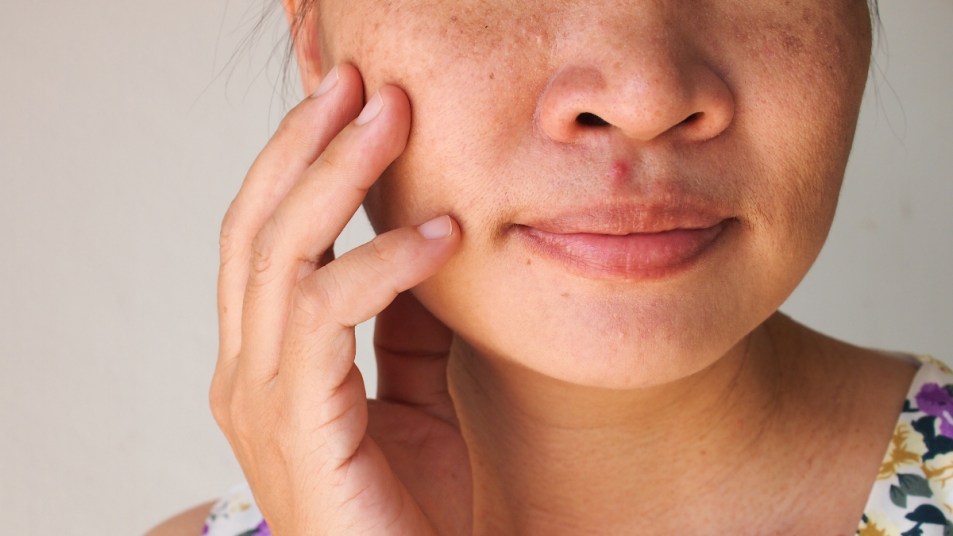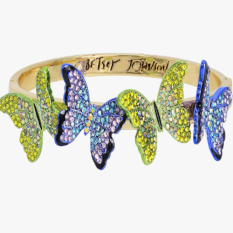Expert Advice: “I Have Stubborn Acne at 45. What’s Causing It?”
It can flare up with perimenopause, but that's not the root cause.

There’s a common misconception around acne: Many women think it ends once they reach 20. However, bumps and pimples can stick around well into adulthood. And even if they went away, they can come back after a decade or two. A 2017 study estimated that more than half of women over 25 struggle with persistent adult acne, and 20 to 40 percent of all women over 45 develop late-onset acne. But what’s causing acne after age 45, whether it’s persistent or late-onset? When one of our readers asked about it, we reached out to Dr. Barbara DePree, gynecologist, for answers.
Meet our expert.
Barbara DePree, MD, is a gynecologist in private practice and director of Women’s Midlife Services at Michigan’s Holland Hospital. A Certified Menopause Practitioner, she is the founder of MiddlesexMD.com, an educational resource for women’s sexual health in perimenopause and beyond. To ask her a question, send an email to health@firstforwomen.com.
What’s Causing Stubborn Adult Acne After 40
Q: I’m 45 and have developed stubborn acne, like when I was a teenager. Is this due to perimenopause?
A: Most likely. Up to 40 percent of women your age experience acne flare-ups related to hormonal fluctuations (including higher androgen levels, which increase the skin’s acne-causing oil production). But take heart; after menopause when hormones stabilize, women find their skin usually clears. Since you also suffer from bloating and weight gain, it sounds like the culprit, which can be easily confirmed with a blood test, may be estrogen dominance.
Perimenopause is a time when hormone production from the ovaries fluctuates greatly — ovulation is less predictable and of lesser quality. Ovulation results in production of progesterone, so the smooth cyclic changes you were used to are now chaotic. Estrogen levels can be much higher (as it takes the reproductive system more effort to recruit the aging follicles), or have some prolonged plunges. Why? During perimenopause, when progesterone dips and estrogen remains steady, an imbalance results. This causes the symptoms you describe along with waning sex drive, worsening PMS symptoms, hair loss, and fatigue.
I suggest supplementing daily with 200 milligrams DIM, short for diindolylmethane (Buy from Amazon, $19.95). DIM is a plant nutrient found in cruciferous vegetables such as cabbage, broccoli, cauliflower, and Brussel sprouts that helps metabolize excess estrogen and in turn acts as an androgen antagonist to eliminate hormonal acne. I find it hard to support most supplements as there just isn’t clinical data to suggest they really make a difference (with a few exceptions) but I do support healthy foods. Also helpful: washing your face daily with a gentle over-the-counter cleanser containing salicylic acid or benzoyl peroxide to help nix acne-causing bacteria under the skin.
Finally, try cutting out high-fat and high-sugar foods (including sugary beverages, processed foods, and fried foods). A large study published in Jama Dermatology found a significant link tying acne to these foods. Weight management requires you to pay more attention to the details of your diet and exercise. And metabolically, there are changes that contribute to weight gain. So, being very proactive and improving those habits in early perimenopause will be important in trying to mitigate the weight gain.
Related: Feel a Pimple Coming On? Top Dermatologist Reveals How *These* Stickers Can Make it Disappear Fast
This content is not a substitute for professional medical advice or diagnosis. Always consult your physician before pursuing any treatment plan.
A version of this article originally appeared in our print magazine, First for Women.













